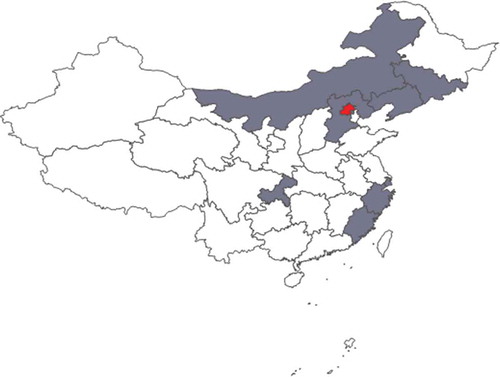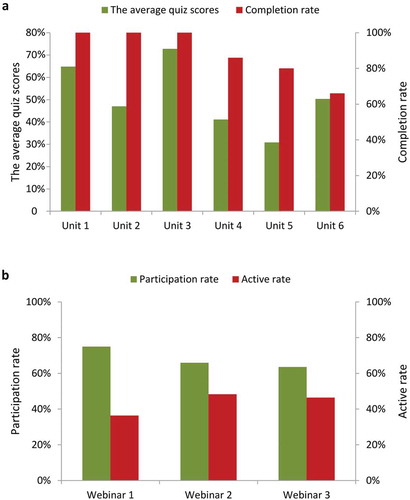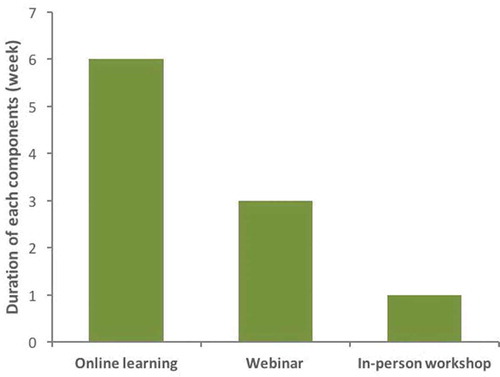Figures & data
Figure 1. Geographic distribution of clinicians who attended the training program.
A total of 50 training program participants were from nine cities or provinces of China, including Beijing, Hebei, Shanghai, Zhejiang, Fujian, Chongqing, Inner Mongolia, Jilin and Liaoning provinces (Blue areas in the map). The in-person workshop was in Beijing (Red area in the map).

Table 1. Quantitative data of demographic characteristics of surveyed respondents (N = 44).
Table 2. Categorical data of demographic characteristics of surveyed respondents (N = 44).
Figure 3. Performance of respondents in the online eLearning and webinar. a, quiz scores and completion rates in each of the six units in online eLearning. b, the participation rates and the active participation rates in each of the three webinars.

Table 3. Surveyed respondents’ ratings of overall difficulty of training program (N = 44).
Table 4. Surveyed respondents training program satisfaction results (N = 44).
Table 5. Willingness to recommend and pay (N = 44).
Table 6. Surveyed respondents feedback (N = 22).
Supplemental Material
Download Zip (52.4 KB)Data availability statement
The main data used to support the findings of this program is included within the article. The datasets generated and analyzed during the current program are available from the corresponding author (Yuanyuan Kong, [email protected]) on reasonable request.

